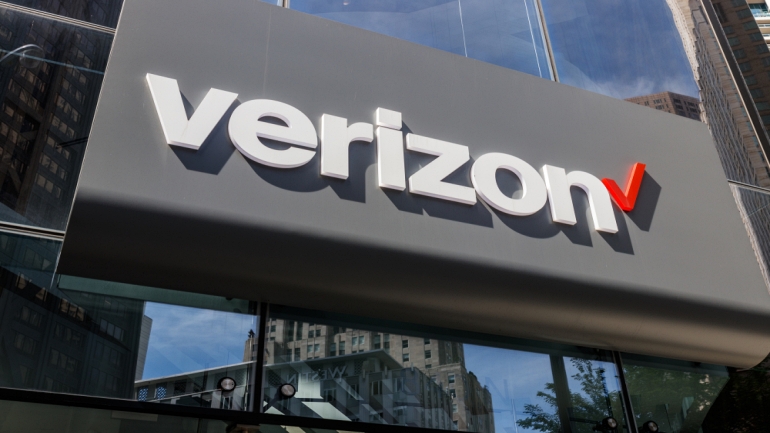American telecoms giant Verizon said that it has made enterprise-specific upgrades and has “supercharged” its cloud-calling Virtual Communications Express (VCE) platform. The company has boosted its VCE solution by providing delivery over its global VoIP network, and reinforced the service with hosted or premises-based SD-WAN connectivity. The platform, which now provides an opportunity to enhance employee collaboration and productivity, is currently available across Asia, Europe and the United States. Alla Reznik, Executive Director of Customer Experience, Global Products and Services at Verizon, said, “By leveraging Verizon’s global network strength and market leading VoIP portfolio, we have developed an enhanced collaboration solution that delivers powerful hosted UC&C features underpinned by superior network connectivity and performance. This enterprise-grade solution will take global business collaboration to the next level.” In its press release, the company said that by combining the VCE platform with Verizon’s VoIP service, users will significantly reduce costs…
Verizon has announced a successful edge computing trial on a live 5G network, conducted using their newly formed 5G test bed in Houston. The company’s engineers used Multi-Access Edge Compute (MEC) equipment and MEC platform software, incorporated in a network facility closer to the network edge, and managed to decrease network latency by half. The test results are important for next generation networks, enabling 5G to support low-latency applications such as Virtual Reality (VR). Low latency refers to minimizing the round-trip time taken by data packets. This is an essential yet enormously challenging attribute for a 5G network, and its high performance requirements. At present, many mobile applications depend on cloud-based processing that is handled in centralized data centers, and the physical distances involved increase latency. According to Verizon, locating the computing power nearer to the users at the network edge significantly decreases the time to deliver services. …
Three telecommunication giants, Verizon, Motorola and Samsung, have shared some good news and provided updates regarding progress with the long-awaited 5G network. Verizon has announced that they have successfully accomplished the connection of a 5G-upgradeable Motorola smartphone using a Qualcomm 5G modem and Samsung’s 5G technology to their 5G network. The team performed tests that included video calling and Internet browsing by means of a 5G link. According to Bill Stone, vice president, Technology Development and Planning for Verizon, “In the past two years, we have consistently led the world in 5G, including launching the world’s first commercial 5G service last month”. Obviously upbeat about this successful test using an actual smartphone, he assured, “We will be the first to offer a 5G upgradeable smartphone on our network in 2019.” Verizon’s 28 GHz spectrum and Samsung 5G New Radio solutions were employed to complete the transmissions. The 5G-enabled…
October 1st, 2018 will be remembered as the date when the first 5G broadband network went live, with the telecommunications giant Verizon launching its 5G network in parts of Houston, Indianapolis, Los Angeles and Sacramento. The company confirmed that it will be expanding its coverage shortly, pending the installation of new standards-compliant equipment. “The world’s first commercial 5G service is here. We’ve formed incredible partnerships with many of the world’s leading technology companies, the international technical standards bodies, public officials, developers and our own customers to drive the 5G ecosystem forward, faster than most had predicted. And now, actual customers. It’s been an incredible journey…and we’re just at the starting line,” the president of Verizon Wireless, Ronan Dunne, expressed enthusiastically. The very first user on this network, a resident of Houston, Clayton Harris, became one of the early adopters by setting up a “5G Home” service, an ultra-fast…
Connecting to a public WiFi network at airports, hotels or even at a local coffee shop is not always as safe as one might think, as intercepting private information sent over a public network is quite easy even for inexperienced hackers. As a result, Verizon has decided to combat this security vulnerability by launching a VPN for their customers, Safe Wi-Fi. This new service protects personal data from prying eyes, and blocks advertisement trackers by using VPN encryption. Safe Wi-Fi is available on iOS and Android devices for a fee of $3.99 per month, and can cover up to 10 devices linked to a Verizon account. Considering how much the theft of personal information might cost a user, this is a small price to pay for keeping important data secure.
T-Mobile US recently addressed speculation about potentially shifting its network equipment from Nokia to Ericsson. The carrier confirmed continued collaboration with both companies, dismissing rumors that impacted Nokia’s market shares.
AT&T’s acquisition of over $1 billion spectrum from UScellular enhances its network capabilities alongside T-Mobile and Verizon, marking a significant shift in the telecom landscape. With UScellular retaining crucial assets, the move aligns with evolving industry trends, focusing on infrastructure and Fixed Wireless Access services.
AST SpaceMobile has secured a U.S. government contract under the SDA’s HALO program, enabling it to compete in prototype space tech projects. This milestone positions the company to demonstrate its large BlueBird satellite arrays for government use, with potential applications in secure communication.
The FCC’s decision to allocate 4.9 GHz spectrum rights to FirstNet and AT&T is transforming communications for public safety networks. By unlocking underutilized bandwidth, this move enhances infrastructure, bridging gaps in emergency responses.
The GSMA and MSSA partnership is set to revolutionize global communication through VoIP and satellite integration. By synchronizing terrestrial and satellite networks, they aim for enhanced connectivity, efficiency, and scalability. This collaboration promises to redefine VoIP solutions, overcoming challenges and paving the way for advanced, seamless global communications.













